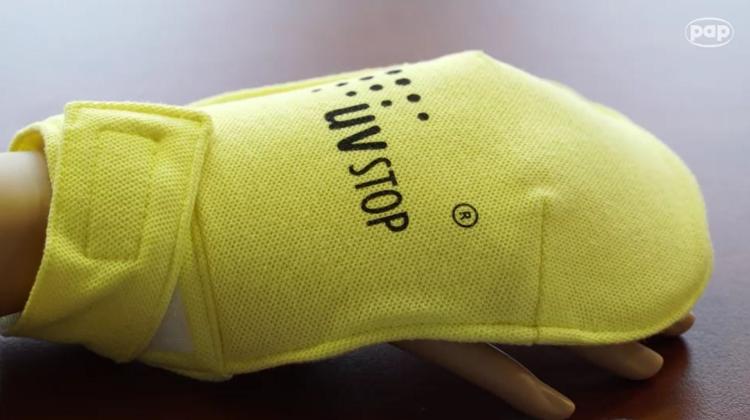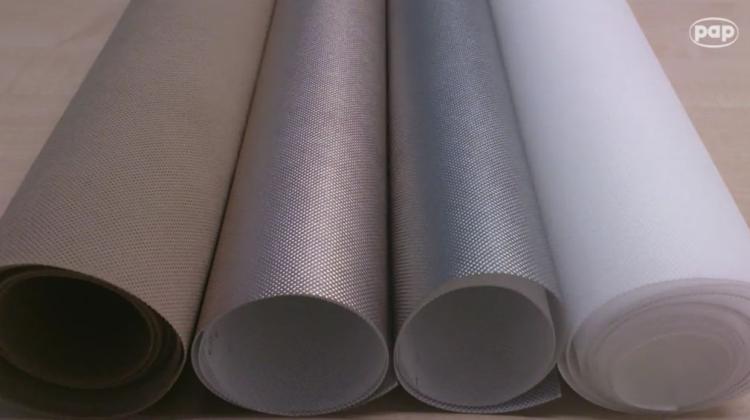Polish scientists have developed UV protection textiles

Clothes protecting against the harmful effects of UV radiation, made from innovative barrier materials developed by the Textile Research Institute in Łódź, may soon appear on the Polish market. These materials can also be used for production of shutters, or to protect museum collections.
New generation of composite textiles for protection against the harmful effects of UV radiation and microbes have been developed by scientists from the Textile Research Institute in cooperation with Poznań University of Technology in the project ENVIROTEX. According to the authors of these inventions, the technologies are innovative on a global scale, and production of such materials may become a Polish specialty.
Textile Research Institute in Łódź developed two types of UV absorbers: organic and inorganic.
"Organic absorbers based on triazine are called colourless dyes, which, added to the dye bath, will be included in the structure of textile products. As a result, the textile product will have UV absorption properties" - told PAP Prof. Jadwiga Sójka-Ledakowicz - director of the Textile Research Institute and co-author of inventions.
She emphasised that textiles and fabric currently used for the production of summer clothing, usually made from cotton fibres, often do not have sufficient UV protective properties.
The introduced absorbing agent has a very high molar absorption coefficient, which means that a small amount is sufficient to effectively protect the material from exposure to UV light. The Institute uses about 0.3 grams of the absorber in a textile product with a mass of 100 grams. "Therefore, such a product does not become much more expensive" - noted the Institute director.
The second - inorganic - group of absorbers has been developed on the basis of metal oxides, such as titanium dioxide with modified surface, and introduced into the structure of textiles in the form of micro and nanoparticles. "These absorbers, placed on the textile surface in the form of a coating paste, will strongly deflect the full range of UV radiation (UVA, UVB and UVC)" - added Prof. Sójka-Ledakowicz. In her opinion, this technology is unique because it is environmentally friendly and cost-effective.
With these solutions, textiles can effectively protect the skin against the harmful effects of UV radiation, both solar and emitted from artificial sources. They also inhibit the growth of microorganisms, especially certain bacteria present in the air.
According to specialists from Łódź, such products are also safe, because there are not allergenic and do not irritate the skin. Research in this regard has been conducted by the Institute of Occupational Medicine in Łódź, which was a partner in the project ENVIROTEX.
Barrier materials developed at Textile Research Institute in Łódź have been used to prepare pilot series of items of protective clothing - T-shirts, blouses, hats and gloves. They were tested by public transport workers who built tracks in Łódź, road builders building a highway, LOT airline ground workers, farmers, sports judges, and lifeguards on the beach.
"Our hats also have adequate neck protection. Everyone clearly said that they feel very well wearing these products, that the physiological comfort has been preserved and there was no redness of the skin" - added co-author of the invention.
Such products may also be intended for children staying in the sun. Because - as Prof. Sójka-Ledakowicz emphasized - even though the sun is essential and affects, among other things, the production of vitamin D3, its harmful effects are significant, and dermatologists alarm about the growing number of cases of photosensitization or melanoma.
Polish materials can also be used in interior design as covering materials, upholstery, materials for outdoor furniture. Director of the Textile Research Institute in Łódź admitted that there was great interest in their use for the production of umbrellas, roller shutters, awnings and blinds.
Barrier materials have also been tested in the exhibition halls of the Academy of Fine Arts in Łódź, archives and libraries, as they can protect museum collections, art collections and book collections from the destructive effects of UV radiation, toxic organic compounds and microorganisms. "For example, blinds protect against the harmful effects and help valuable antique books survive much longer" - added the head of the Institute.
She emphasized that the technologies had already been tested and were at an advanced stage of commercialisation. The first large batch of organic absorbers will soon be produced under license agreement. Textile factories, which have obtained the know-how of the absorber application technology are very interested in acquiring them in order to introduce UV protection products on the Polish and European market.
The products that meet the technical criteria specifically developed for these materials, will obtain a UV-Stop ® certificate - registered trademark of the Textile Research Institute.
The innovative technologies Polish are also highly valued abroad. They won gold medals at the fairs of inventions and innovations in Brussels, Nuremberg and the United States. Both technologies are already protected by patents in Poland, organic absorbers also by European patent, and inorganic absorbers - by British patent and international patent.
PAP - Science and Scholarship in Poland
szu/ hgt/ mrt/
tr. RL
Przed dodaniem komentarza prosimy o zapoznanie z Regulaminem forum serwisu Nauka w Polsce.















